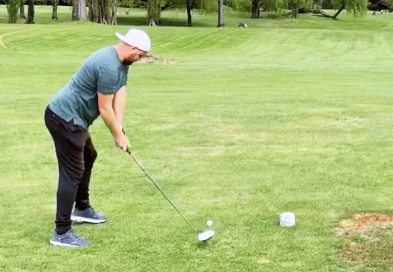CUMBERLAND PHYSIOTHERAPY PARRAMATTA: Golfer’s elbow is tendinous overload injury of the tendon on the inside of the elbow, usually due to overuse. As its name implies, it is a condition common in golfers. However, as with all sporting injuries, this condition can affect anyone. Golfer’s elbow is similar to Tennis elbow, occurring on the inside of the elbow rather than the outside.
What are the symptoms?
Typically, someone suffering from this condition will experience pain on the inside of the elbow, forearm and possibly extending down to the hand. The pain will be worst with activities that require gripping of the hand and movements of the wrist. Less common is the experience of pins and needles in the hand.
How does it happen?
The exact cause of this condition is unknown,, however it is generally thought to occur when the forces transmitted through the tendon become too great. This can be due to increased demands on the tendon or reduced quality of the tendon tissues.
As the tendon is attached to muscles that bend the wrist and provide grip strength, activities such as golf, rock climbing or manual work that involve gripping objects can easily create forces that damage the tendon.
Conversely, factors such as poor blood supply or simply the normal processes of aging can reduce the quality of the tendon. If the tissue is not functioning well, then even simple but repetitive movements in an office job can cause Golfer’s elbow.
There are a few other known contributing factors for Golfer’s elbow, such as poor posture, neck dysfunction, a recent change in activity and a history of trauma, such as a fall onto an outstretched hand.
What is the treatment?
Golfer’s elbow usually develops slowly, and healing can be a long process. The first step to effective treatment is accurate diagnosis, as many other conditions have similar symptoms and need to be excluded first by a medical professional.
Once a diagnosis of golfer’s elbow has been confirmed, treatment is aimed at allowing tissues to heal and regenerate. This will require a certain level of rest, and changes to the forces affecting the tissues, sometimes through bracing or taping.
Specific exercises have been shown to assist tissues in coping with and responding to load; these are called “eccentric” exercises. Other treatments include increasing blood flow to the area to promote healing. In chronic and severe cases, injections of corticosteroids are used, and in severe cases surgery may be undertaken.
The information in this article is not a replacement for proper medical advice. Always see a medical professional for assessment of your condition.

